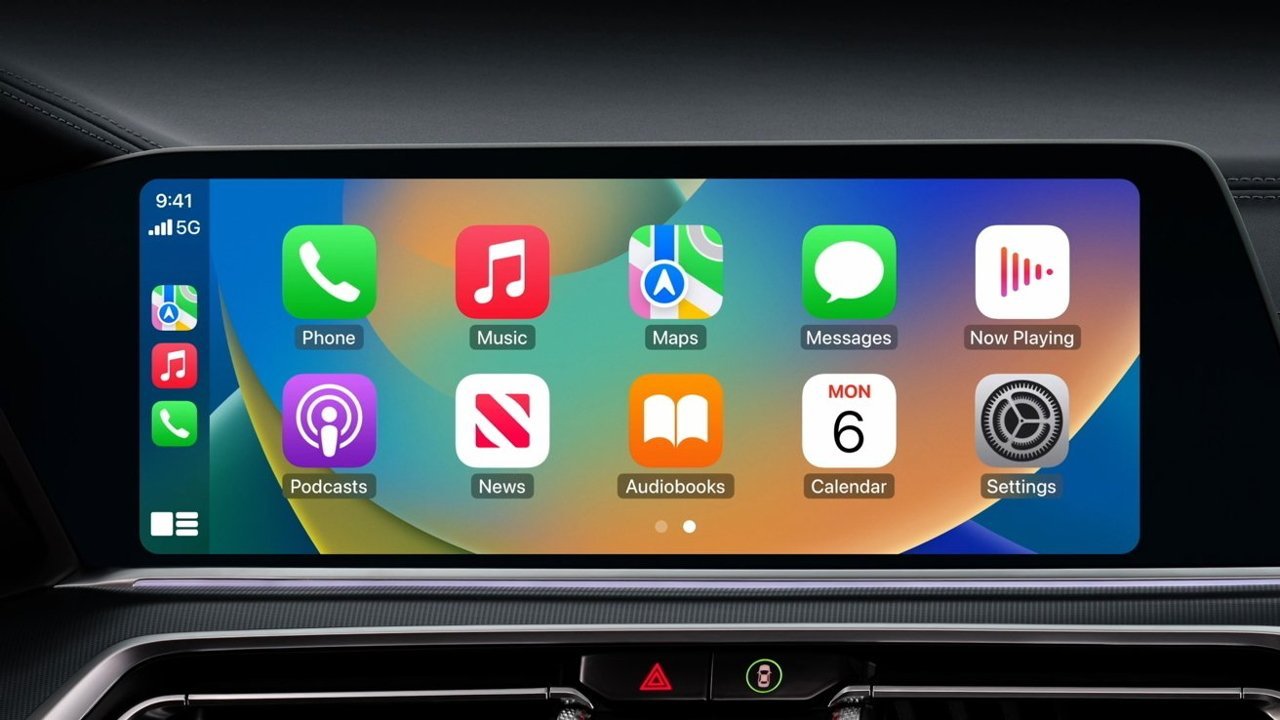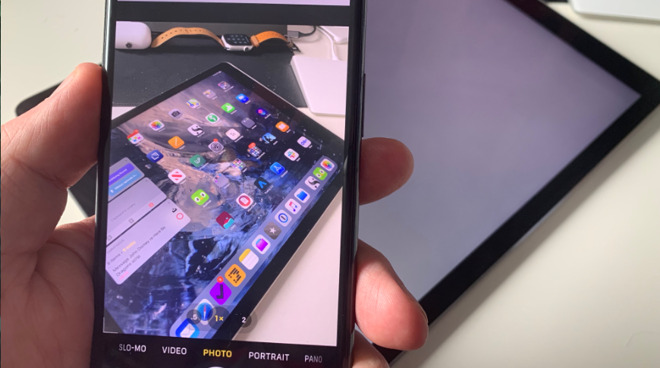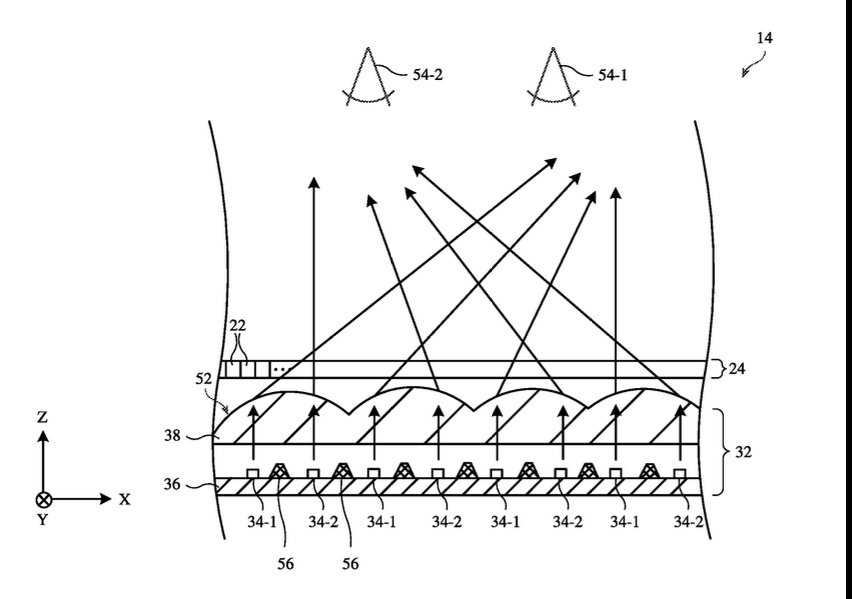Apple Car's dashboard may look different to driver & passenger
Car dashboard space is limited, and Apple is researching ways to allow that one screen to show different information, depending on what angle it is viewed.

The current CarPlay
Let's be really clear here. Nowhere in its 8,900 words does "Display With A Time-Sequential Directional Backlight" mention cars. Or vehicles. Or drivers, or passengers.
Instead, the new patent presents a long list of use cases that starts with laptop computer, continues with VR headset, and ends with "or other electronic equipment." But buried in that list is the phrase "a navigation device."
For that and potentially all or any of these other devices, the patent proposes displays that "may present different content to different viewers" using hardware within the display that it then details.
"For example... a first user-interface (e.g., a navigation user-interface) may be displayed for the first viewer," says the patent, "while a second, different user-interface (an entertainment system user-interface) is displayed for the second viewer."
It's really polarizing the screen so that it presents an image when viewed from one direction, and a different image when seen from another perspective. Picture another situation where there are two people, side by side, in front of a screen, and where one mustn't get distracted but the other risks being bored.
The driver of the forthcoming Apple Car will doubtlessly have a screen showing navigation, vehicle controls and statistics such as speed, or time left before recharging. Using this patent's technology, the passenger, at least in the front passenger seat, could watch a movie.
"Instead of presenting different content to different viewers, the time-sequential directional backlight may be used to provide privacy to the first viewer," continues Apple. "[The] first viewer may be presented with first content (e.g., content A) while the second viewer is presented with a blank screen (e.g., a totally black screen)."
That's similar to a previous patent application that appeared to show how a future iPhone could have a completely blank screen -- unless you were looking at it through Apple AR.

A previous patent application showed how a blank screen could show images to a viewer wearing an Apple AR headset
In this case, Apple does mention AR, and as well as iPhones and iPads, also speaks of "a smaller device such as a wrist-watch device, a pendant device, a headphone or earpiece device."
For each of those, though, the description is about the screens on or in the device, rather than using them to see through to content on other displays.
The great majority of the patent's text ignores use cases, though, and instead details processes and procedures for achieving two images on one screen. There are multiple steps, and Apple details several optional materials and components needed, but they all boil down to using "a time-sequential directional backlight unit."
"The backlight unit may emit light in different directions in different configurations," says Apple. "In a first state, the backlight unit emits light at maximum brightness in a first direction."
"In a second state, the backlight unit emits light at maximum brightness in a second direction that is different than the first direction," it continues. "The backlight unit may repeatedly and rapidly switch between the different states."
"The first direction may be towards a first viewer whereas the second direction may be towards a second, different viewer," says the patent. "Therefore, each viewer receives backlight in one of the configurations and does not receive backlight in the other configuration."

Detail from the patent showing how light from different images can be directed to different viewers
With this being for a thin display panel, it's hard to imagine that a backlighting system can be seen across a very wide field of view.
That could be fine for the privacy aspect, since it's really the user and no one else who must be able to see the screen. So if the screen effectively can't be seen from any other angle than straight on, the privacy idea works.
But Apple repeatedly writes of the need for two viewers to see different images or video on the one display. That's got to be something for the Apple Car.
Although, nowhere in the patent does it talk about a driver being distracted because his or her passenger is watching "Knight Rider" on the dashboard.
Read on AppleInsider

The current CarPlay
Let's be really clear here. Nowhere in its 8,900 words does "Display With A Time-Sequential Directional Backlight" mention cars. Or vehicles. Or drivers, or passengers.
Instead, the new patent presents a long list of use cases that starts with laptop computer, continues with VR headset, and ends with "or other electronic equipment." But buried in that list is the phrase "a navigation device."
For that and potentially all or any of these other devices, the patent proposes displays that "may present different content to different viewers" using hardware within the display that it then details.
"For example... a first user-interface (e.g., a navigation user-interface) may be displayed for the first viewer," says the patent, "while a second, different user-interface (an entertainment system user-interface) is displayed for the second viewer."
It's really polarizing the screen so that it presents an image when viewed from one direction, and a different image when seen from another perspective. Picture another situation where there are two people, side by side, in front of a screen, and where one mustn't get distracted but the other risks being bored.
The driver of the forthcoming Apple Car will doubtlessly have a screen showing navigation, vehicle controls and statistics such as speed, or time left before recharging. Using this patent's technology, the passenger, at least in the front passenger seat, could watch a movie.
If it isn't a car
There is an alternative which does get detailed in the patent, but it is clearly set out as an alternative to the main idea."Instead of presenting different content to different viewers, the time-sequential directional backlight may be used to provide privacy to the first viewer," continues Apple. "[The] first viewer may be presented with first content (e.g., content A) while the second viewer is presented with a blank screen (e.g., a totally black screen)."
That's similar to a previous patent application that appeared to show how a future iPhone could have a completely blank screen -- unless you were looking at it through Apple AR.

A previous patent application showed how a blank screen could show images to a viewer wearing an Apple AR headset
In this case, Apple does mention AR, and as well as iPhones and iPads, also speaks of "a smaller device such as a wrist-watch device, a pendant device, a headphone or earpiece device."
For each of those, though, the description is about the screens on or in the device, rather than using them to see through to content on other displays.
The great majority of the patent's text ignores use cases, though, and instead details processes and procedures for achieving two images on one screen. There are multiple steps, and Apple details several optional materials and components needed, but they all boil down to using "a time-sequential directional backlight unit."
"The backlight unit may emit light in different directions in different configurations," says Apple. "In a first state, the backlight unit emits light at maximum brightness in a first direction."
"In a second state, the backlight unit emits light at maximum brightness in a second direction that is different than the first direction," it continues. "The backlight unit may repeatedly and rapidly switch between the different states."
"The first direction may be towards a first viewer whereas the second direction may be towards a second, different viewer," says the patent. "Therefore, each viewer receives backlight in one of the configurations and does not receive backlight in the other configuration."

Detail from the patent showing how light from different images can be directed to different viewers
With this being for a thin display panel, it's hard to imagine that a backlighting system can be seen across a very wide field of view.
That could be fine for the privacy aspect, since it's really the user and no one else who must be able to see the screen. So if the screen effectively can't be seen from any other angle than straight on, the privacy idea works.
But Apple repeatedly writes of the need for two viewers to see different images or video on the one display. That's got to be something for the Apple Car.
Although, nowhere in the patent does it talk about a driver being distracted because his or her passenger is watching "Knight Rider" on the dashboard.
Read on AppleInsider

Comments
🤓